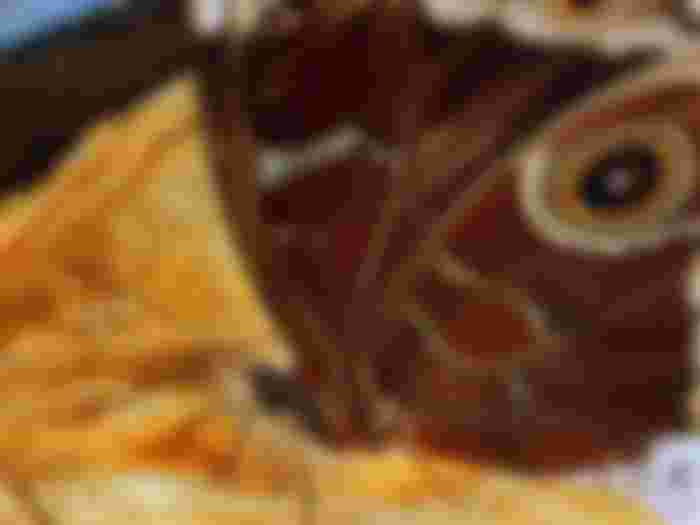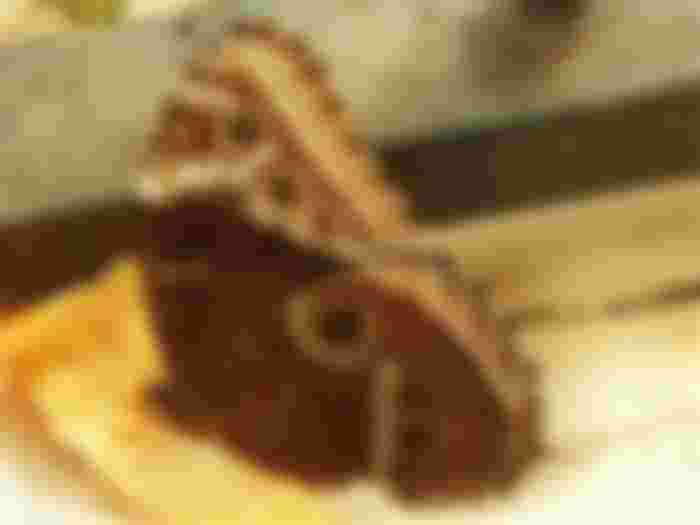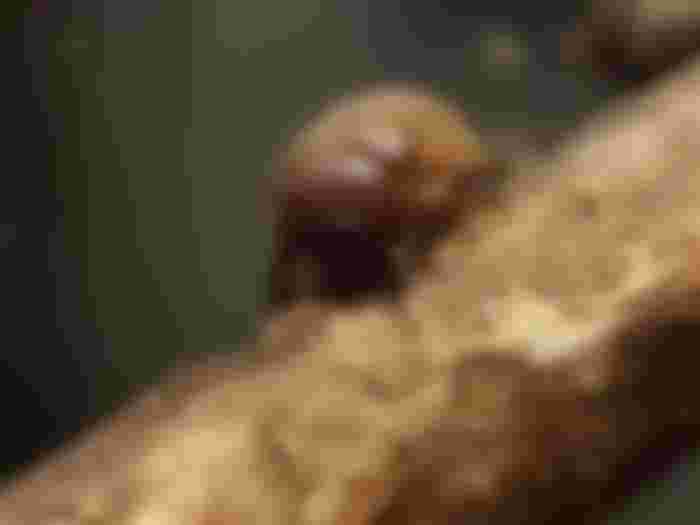
May is the season when many insects can be seen. It is the winter season in Venezuela. Possibly this is the reason why thousands of insects come out of their shells either to feed or to reproduce. Each species of insect must fulfill its life cycle. The rain brings its goodness. With the increase of rain, the growth of plants, flowers and fruits increases. Everything in nature reproduces much faster. It is beautiful to see the change that occurs in the environments near the mountains. It seems like magic.

Our environment will always be embellished with different species of butterflies. In this opportunity I found the blue butterfly. The blue butterfly is the national symbol of Venezuela. It is a giant butterfly, the wings are huge compared to its body. This butterfly has a double tonality. On one side it is brown with black borders and false eye, on the other side it is sky blue with black border. It is a majestic butterfly. I regret not having been lucky enough to photograph the blue part.

Going into these places, even though they seem scary, is the most meaningful experience for me. In these environments I have found many species of insects including butterflies. The blue butterfly (Morpho peleides) travels these paths. It is the largest species not only in Venezuela but in the world. This beautiful butterfly lives in tropical rainforests, it is difficult to find it, at least for me it has been. This is the first time that I get so close to the blue butterfly.
Possibly it has been looking for a mate. Empirically I am learning about the behavior of these species. The blue butterfly has different habits than other species, they do not suck nectar from flowers, they consume rotten fruits, fermented tree sap, fungi or even dead animals.

I am convinced of one thing, we will only talk about nature when we learn to live with it. I make this remark because I often hear people complaining. Not all of us like animals, not all of us like insects, not all of us like plants, but there are those who like everything and we have to respect that. To speak ill of species without knowing how they live and what their functions are in the environment is a lack of interest in the environment that gives us life. For this reason I think that not everyone can talk about the ecosystem if there are no experiences or experiences with it.

May Beetle
Another common insect for this season are the May beetles. They belong to a species called Phyllophaga, these scientific names always call my attention for that reason I look for a reference that indicates me the existence of each word. The experts are the most indicated to handle each term but it is not bad that our curiosity exceeds our expectations.

Beetles feed on the vegetative parts of plants. Now, do you know what the vegetative parts are? The vegetative parts are those that give life to the plant, without them they could not thrive, we speak of root, stem and leaves. Small beetles feed on these parts. These species live under the soil, they come out of it when they grow. The beetle, in their adult stage, take advantage of the rain to come out. When the water loosens the soil, it is easier for the adult beetle to leave the place where it has spent most of its life.
The adult beetle comes out for two things, to finish feeding and to mate. These insects fly clumsily. It is common to see them bumping into the walls of houses. The beetles have two false wings, which are of little use to them. These wings are the ones we see superficially. If you manage to feel them, you will feel a certain hardness, which obviously prevents them from using them to take flight. Their real wings are small, they are hidden under the first ones. For the size and weight of the insect they are not the most suitable, but nature is wise.

The life cycle of these insects is interesting. They come out of the ground, mate immediately, the females lay their eggs in mud balls which they cleverly bury using their powerful legs, and feed for two months. The larvae grow near the roots of the plants to hatch again between July, August and September. These little animals pupate in the soil to remain for other months; December, January, February, March, finally in April-May when the soil softens due to the rains and as adult species.







This might carry so many viruses. Kind of scary for me. Need to do something to exterminate it.